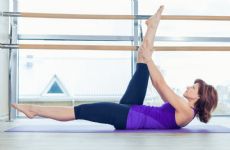|
In college I was a dancer, and Pilates was part of my daily training. Somehow I would ''get through'' the mat classes, just going through the motions, but miraculously, I was never sore. My roommate, on the other hand, would be doubled over the next morning, whining in agony as the DOMS (delayed onset muscle soreness) would remind her of class several hours after it ended. It took me years to figure out that the reason I wasn't sore was that I didn't know how to recruit my innermost abdominals. I was skimming the surface without going very deep. Once I learned how to engage and target the internal abdominals, I was able to redefine my abs from the inside-out. And that is exactly what I am going to show you how to do today! WHAT ARE THE INNERMOST ABDOMINALS? Your core musculature is made up of layers of tissues, arranged in an oblong soft-tissue canister-like shape. Most of us are familiar with the 6-pack (actually a 10-pack) rectus abdominals, the external and internal obliques, and the corset-like transverse abdominals. But there’s more than that. There are deeper linings to the canister! At the basin of the canister, there are numerous large and small pelvic floor and pelvic muscles. At the back-side of the canister, along the front and back of the lower spine is the mighty psoas, and the quadratus lumborum. And at the top of the canister is the dome-shaped diaphragm. Lastly, the diaphragm is further connected to the inside of ribcage, which is interwoven with muscular lacings of the intercostal muscles. All of these important soft tissues are like the innermost lining of your birthday suit, and they need to be stretched, toned and integrated into all of your core practices for optimum function, mobility and coordination. These muscles stitch together with fascias or connective tissues that help all of these tissues to adjust to every movement you make in a supportive way—like a well-tailored undergarment. But if any of these muscles are tight or congested, this ''undergarment'' buckles its own seams and does not fully adjust whether it's contracting or lengthening. And if your inner seams are not flowing well, the seams of the more external abdominal muscles are unable to fully express their range of contraction or stretch, either. Ever bought a "knock-off" designer suit where the suit's lining did not match up well with the actual suit fabric? If you don't properly exercise the innermost abdominals, you are wearing a knock-off of your own birthday suit! HOW TO FIND YOUR INNERMOST ABDOMINALS Here are a few exercises to help you build phenomenal internal core strength that will have a ripple effect of improving power and performance in every layer of your core: 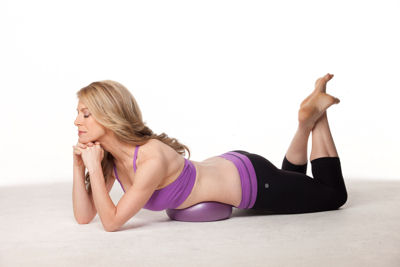 1) LOCATE THE LAYERS: Abdominal Massage
WHY? This helps to stretch the layers of abdominal myofascia and puts you in touch with the full range of motion of the diaphragm. 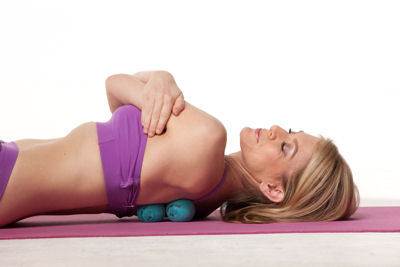 2) RIB ROCK
WHY? This frees up intercostal tension, mobilizes rib joints and posterior diaphragm rib connections, and massages deep back musculature. 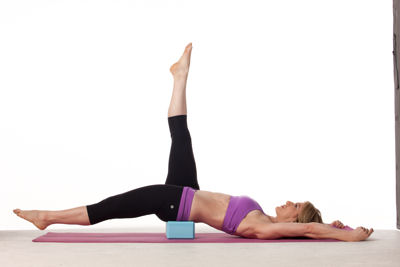 3) Coreso Leg Lifts Lie on a yoga mat with a yoga block or phone book under your pelvis and move into the position pictured above by following these steps:
WHY? This pose targets the intimate relationship between our breath and our posture. You will feel a tremendous elongation of the connection between the respiratory diaphragm and iliopsoas. Hip flexors are lengthened as are the hamstrings, the lattisimus, and subscapularis. 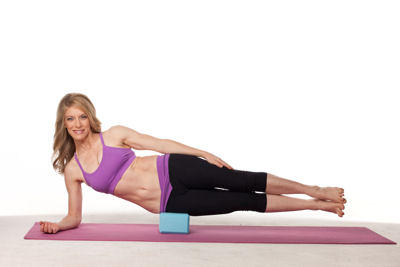 4) Magician’s Assistant on a Ledge
WHY? This exercise targets the interface of both oblique layers and the deep lateral stabilizer, the quadratus lumborum. It also strengthens portions of the iliopsoas. (You will feel this one tomorrow!) 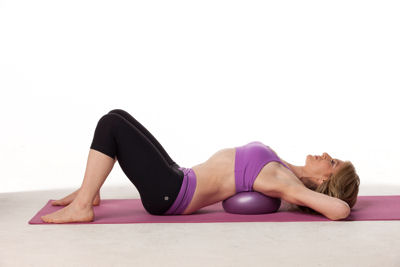 IMAGE A  IMAGE B 5) Intercostal Crunches
WHY? The ball provides a bit more range of motion for all tissues surrounding the spine and rib-cage to get involved with this dynamic version of the crunch. Abdominals used to doing standard “crunches” have likely been strengthened in a limited range for years. This version of the pose digs deeper than rectus abdominals and provides full innermost abdominal interactivity for the core.  About Jill Miller About Jill MillerJill Miller is a yoga/fitness therapy expert. She instructs her original Yoga Tune Up® format worldwide and has produced over 55 critically acclaimed videos and therapeutic fitness products. Her innovative format is taught nationwide at Equinox gyms and has been featured on the "Today" show, ABC TV, FOX TV, SELF magazine, Shape, Fitness, Redbook, Prevention, Real Simple, Yoga Journal, Chatelaine, Whole Living, Muscle & Fitness, Gaiam.com and more. She is based in Los Angeles, CA. Her newest DVD is entitled Coregeous®. What is your favorite way to work your core? |
Related EntriesMore From SparkPeople
|










.png)
